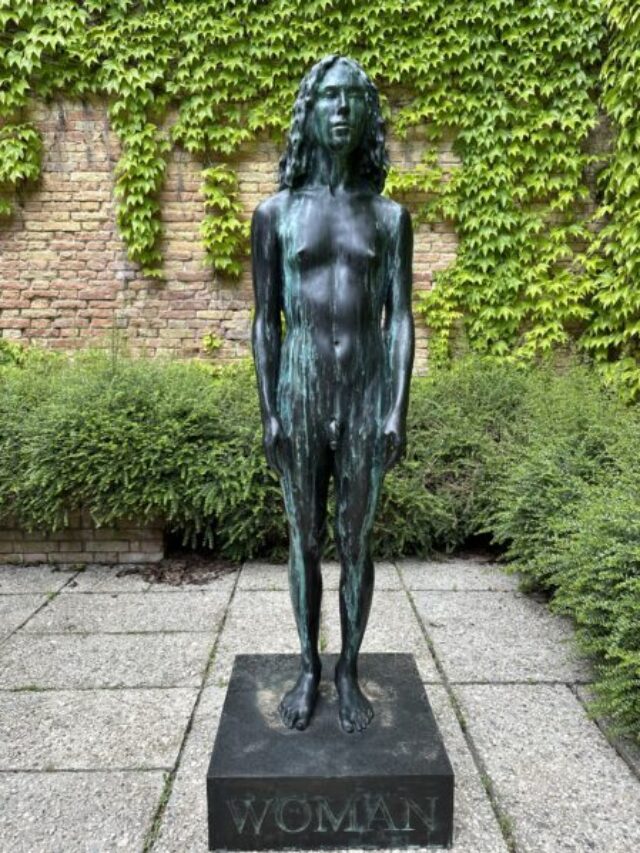One of the most prominent cultural gatherings worldwide, the Venice Biennale, has long served as a platform for innovative art and various viewpoints. By emphasising the diversity and depth of American LGBTQ+ artists’ contributions to modern art, the Biennale is making a significant statement in 2024 by concentrating on them. The current exhibition highlights the continuous fight for representation and equality in art while showcasing their creative ability.
With their tales of resiliency, identity, and metamorphosis, these artists take centre stage and invite viewers to interact with art that breaks down barriers and honours the breadth of human experience. More than just an exhibition, this historic occasion at the Venice Biennale is a celebration of diversity, an appeal for inclusivity, and evidence of the ability of art to effect social change.
Liz Collins
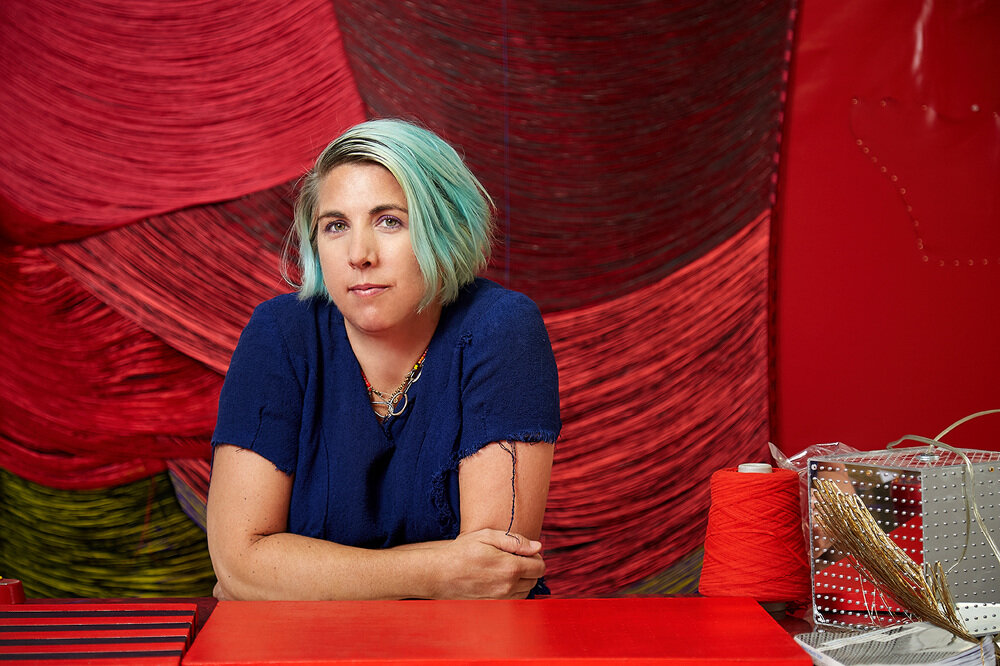
Liz Collins, originally from Alexandria, USA, now based in vibrant New York City, is making waves at the prestigious Biennale Arte with her unique blend of art and design. Her tapestries are at the heart of her creative output, bursting with lively colours and an unmistakable queer feminist vibe. Collins’ art takes you on a journey where you’re surrounded by vibrant rainbows cascading down mountains against a starry sky, creating a dreamy vision of a queer utopia just out of reach. But amidst this beauty, she doesn’t shy away from highlighting environmental concerns. Lightning bolts hint at the fragility of our world, reminding us of the urgent need for ecological action.
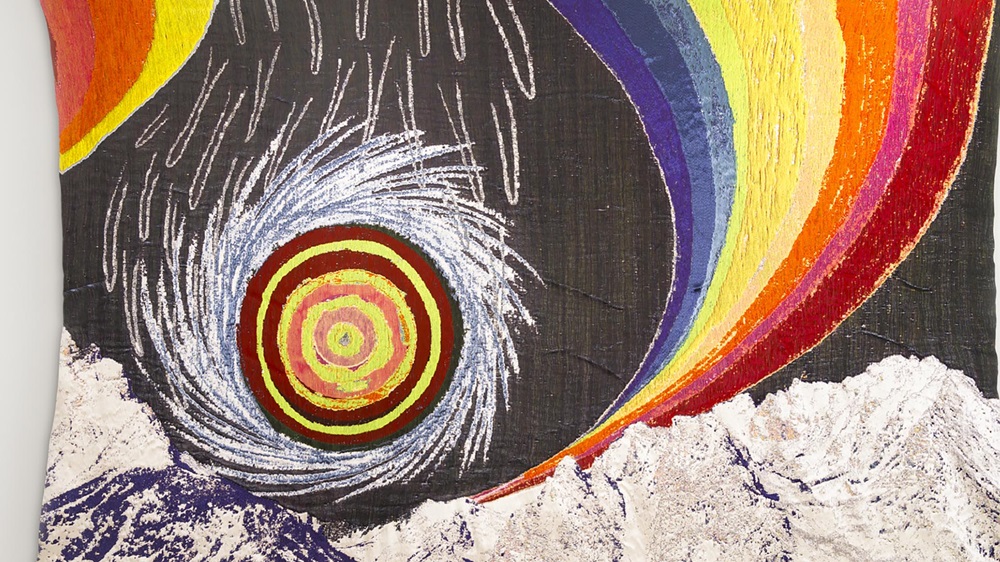
One standout piece is her lunar globe, inspired by Sonia Delaunay’s geometric designs. But Collins puts her twist on it, with coloured threads crisscrossing a dark background, inviting viewers to ponder the deeper meanings within her art. Being featured at the Biennale Arte is a big moment for Collins, allowing people to explore her imaginative world. In a time of uncertainty, her work offers not just a reflection of reality but also a glimpse into hopeful queer futures. Through her art, she challenges norms and encourages us to embrace vulnerability while imagining a more inclusive and imaginative world.
Leilah Babirye
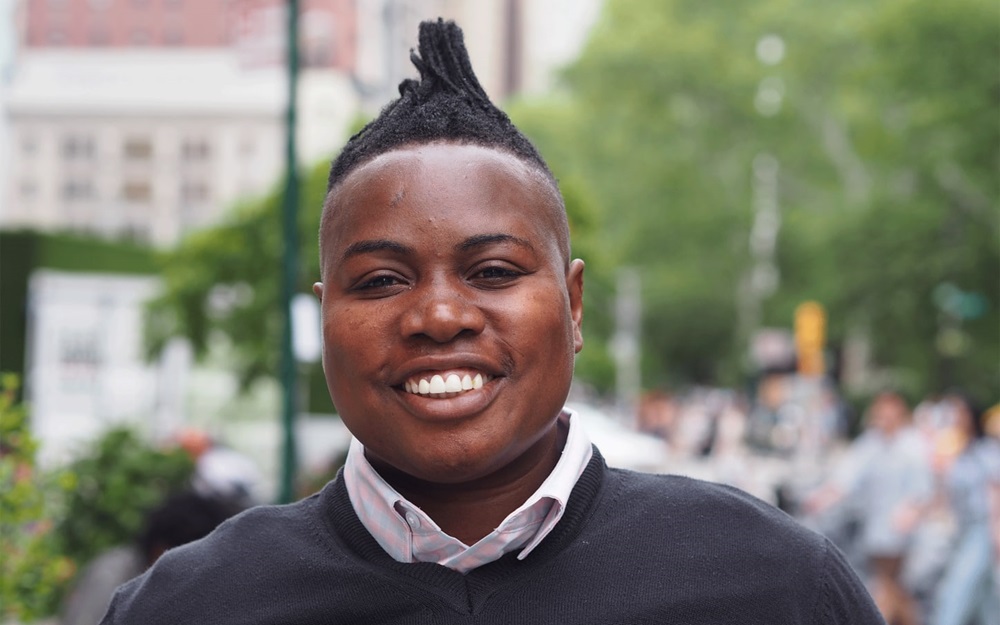
Leilah Babirye, born in Kampala, Uganda, in 1985 and now living in New York City, USA, is making a significant impact at the prestigious Biennale Arte with her diverse work. She explores themes like identity, sexuality, and human rights through her sculptures, which blend traditional African styles with modern ideas. Babirye’s sculptures stand out for how they take up space, mixing African mask designs with contemporary touches. She uses materials like metal, ceramics, wood, rubber, nails, and teapots to create exciting textures and shapes in her pieces.
One of her notable sculptures, “Namasole Wannyana, Mother of King Kimera from the Kuchu Royal Family of Buganda” (2021), is inspired by Uganda’s Buganda Kingdom, known for its rich history. While rooted in Ugandan traditions, Babirye’s sculpture goes beyond just history—a powerful expression of her political views and personal resilience. She reimagines what queer lineage means within the Buganda community, envisioning a future where queer Ugandans can live freely without fear of discrimination.
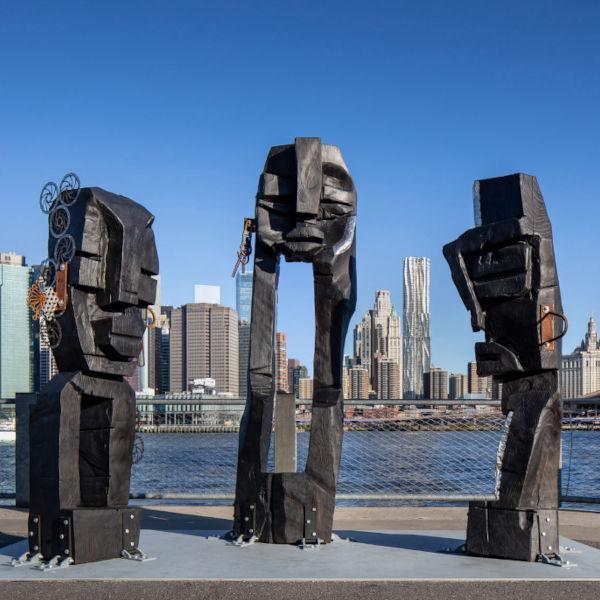
Being featured at the Biennale Arte is a big deal for Babirye, allowing people to explore the depth of her art and its social and political messages. In a time of uncertainty, her work offers criticism and hope for a more inclusive and resilient future. Through her art, she shines a light on marginalized voices and inspires others to envision a better world.
Louis Fratino
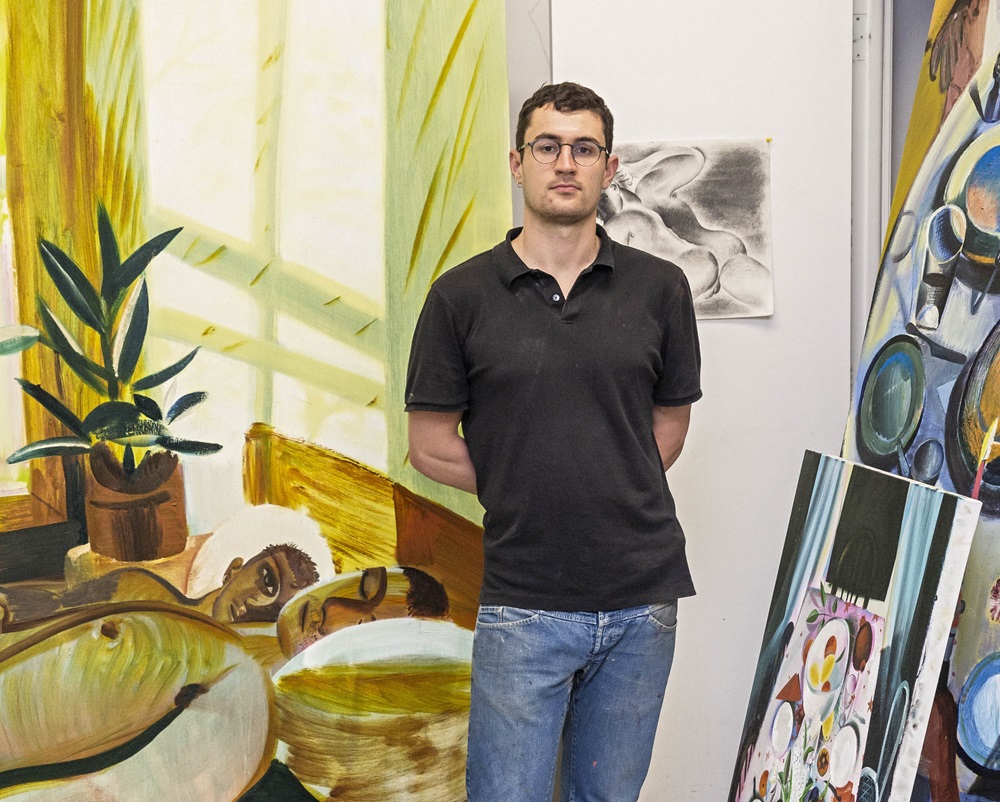
Louis Fratino, born in New York City in 1993 and still living there, is making waves at the famous Biennale Arte with his paintings and drawings. His art beautifully captures the details of male bodies and everyday life for queer people, showing the intimacy and love in their lives. In his latest exhibition, Fratino shares a series of new paintings exploring how LGBTQ+ folks often feel like outsiders. He looks at how queer people experience family relationships from childhood into adulthood, drawing from his own life. Fratino mixes images of family life with homoerotic scenes, creating art that makes us think about the tensions between the two.
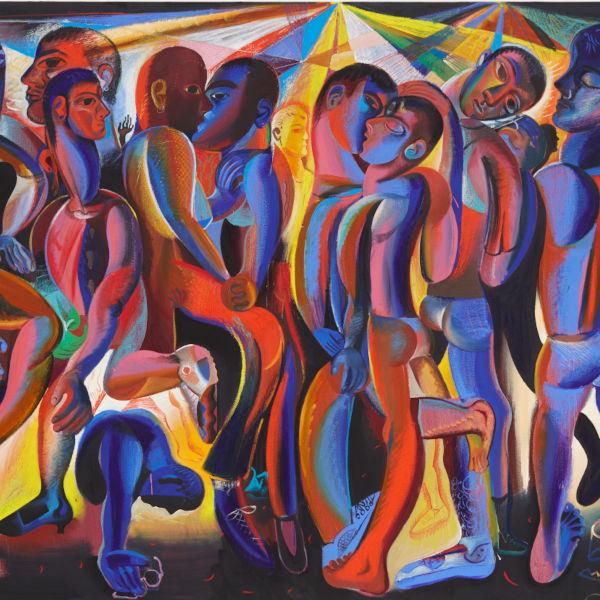
For a long time, queer communities have faced discrimination and violence, both at home and in public. Fratino’s new paintings are heavy with emotion, reflecting the urgent need for change in our society’s treatment of queer people. Being featured at the Biennale Arte is a big deal for Fratino, giving people a chance to see his art and understand the complexities of queer identity and family relationships. In a world full of different artistic voices, Fratino’s work invites us to think deeply about the social and political issues he cares about.
In a time of change and uncertainty, Louis Fratino uses his art to speak up for marginalized communities and challenge the way things are. Through his art, he calls for a more fair and inclusive future for everyone.
Puppies Puppies
Puppies (Jade Guanaro Kuriki-Olivo) hail from Dallas, USA. They were born in 1989 and reside in New York City, USA. Employing a multifaceted approach spanning sculpture, installation, and performance art, Kuriki-Olivo adeptly engages with personal and political issues. “A Sculpture for Trans Women” (2023) manifests as a life-sized bronze sculpture derived from a 3-D scan of the artist’s physique. Adorned prominently with the word “WOMAN,” this work, animated through periodic performances during the exhibition, serves as a provocative counter to the traditional notion of monuments, amplifying visibility and commemorating trans existence through a defiant act of protest.
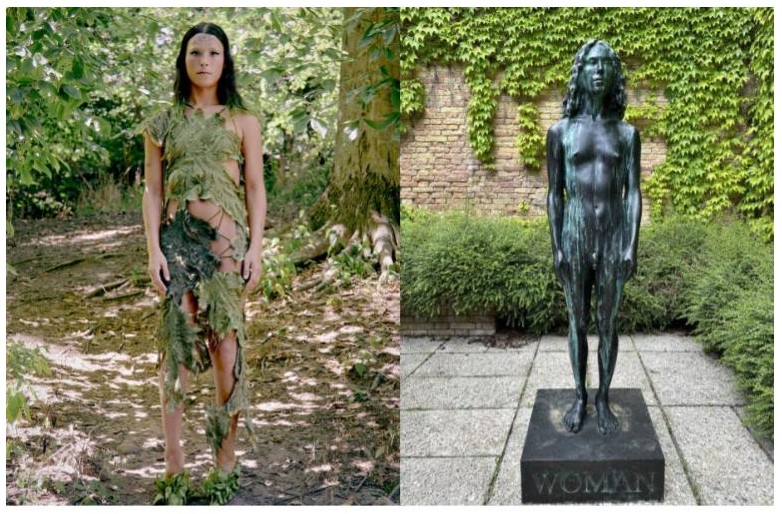 In parallel, “Electric Dress (Atsuko Tanaka)” (2023) serves as a poignant homage to the victims of the 2016 mass shooting at Pulse, a queer nightclub in Orlando, Florida. Drawing inspiration from Atsuko Tanaka’s iconic “Electric Dress” (1956), Kuriki-Olivo incorporates LED lights synchronized to a pulsating heartbeat and cycles through the vibrant hues of the Progress Pride Flag. Both sculptures converge in their tribute to queer and trans lives, challenging narratives of oblivion and invisibility. The debut presentation of Puppies Puppies’ oeuvre at the Biennale Arte marks a significant milestone in the artist’s career, signalling a pivotal moment of recognition within the global art discourse.
In parallel, “Electric Dress (Atsuko Tanaka)” (2023) serves as a poignant homage to the victims of the 2016 mass shooting at Pulse, a queer nightclub in Orlando, Florida. Drawing inspiration from Atsuko Tanaka’s iconic “Electric Dress” (1956), Kuriki-Olivo incorporates LED lights synchronized to a pulsating heartbeat and cycles through the vibrant hues of the Progress Pride Flag. Both sculptures converge in their tribute to queer and trans lives, challenging narratives of oblivion and invisibility. The debut presentation of Puppies Puppies’ oeuvre at the Biennale Arte marks a significant milestone in the artist’s career, signalling a pivotal moment of recognition within the global art discourse.
Agnes Questionmark
Agnes Questionmark, born in Rome, Italy 1995, split her time between Rome and New York City, USA. She is a versatile artist whose practice spans performance, sculpture, video, and installation.
Her seminal work, “Cyber-Teratology Operation” (2024), thrusts a trans body—transspecies, transgender, transhuman—into the limelight within the confines of an operating room under pervasive surveillance. As spectators observe the internal dynamics of this subject, they are confronted with the unsettling reality of the subject’s eye serving as a monitoring apparatus, blurring the boundaries between self and machine. Questionmark’s artistic inquiry delves into the complex terrain of the transgender body, often pathologized, mechanized, and institutionalized within the realms of science and healthcare. Through her installation, she exposes the patriarchal biopolitical forces that underpin societal perceptions and medical practices.
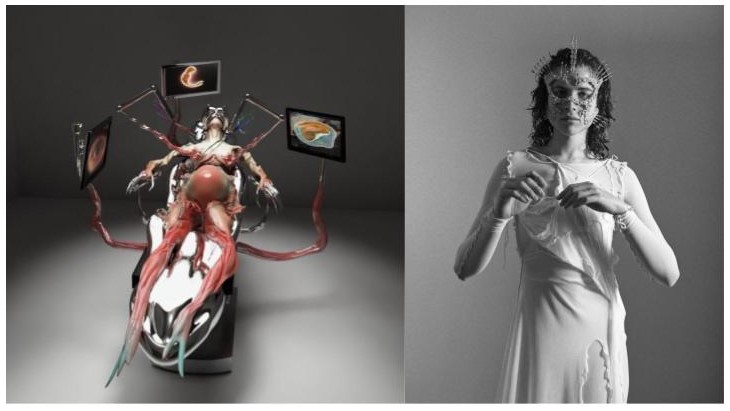 Furthermore, “Cyber-Teratology Operation” challenges entrenched notions of artificiality imposed upon trans bodies by normative societal constructs. Instead, it celebrates the emancipatory potential of bodies in transition, defiantly rejecting conventional taxonomies in favour of self-determined processes of becoming. By interrogating the persistent linkage of gender identity with reproductive capacity, Questionmark’s installation critiques the scientific hegemony that seeks to exert control over bodies undergoing deterritorialization.
Furthermore, “Cyber-Teratology Operation” challenges entrenched notions of artificiality imposed upon trans bodies by normative societal constructs. Instead, it celebrates the emancipatory potential of bodies in transition, defiantly rejecting conventional taxonomies in favour of self-determined processes of becoming. By interrogating the persistent linkage of gender identity with reproductive capacity, Questionmark’s installation critiques the scientific hegemony that seeks to exert control over bodies undergoing deterritorialization.
Navigating between reality, fantasy, and the speculative more-than-human, “Cyber-Teratology Operation” gestates futures and neural pathways previously unimagined. It beckons viewers to envision alternative possibilities, urging a departure from conventional paradigms and embracing transformative potentials. The inclusion of Agnes Questionmark’s work in the Biennale Arte marks a seminal moment in her artistic trajectory, amplifying her voice within the global discourse on contemporary art.
Kang Seung Lee
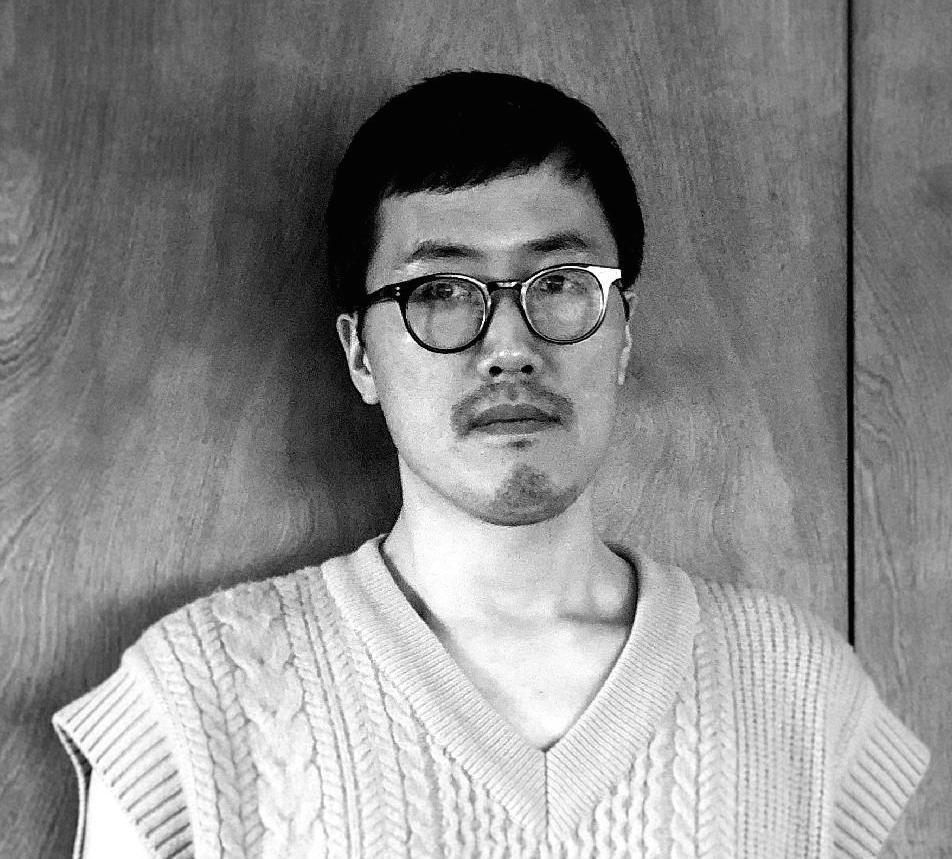
Kang Seung Lee, born in Seoul, South Korea, in 1978, currently resides in Los Angeles, USA. He is a versatile artist who explores diverse artistic mediums, including drawing, embroidery, installation, and the appropriation of organic materials and objects. Lee’s practice is characterized by extensive research periods that blend documentary elements with imaginative imagery.
His latest installation delves into the rich narrative and iconographic possibilities surrounding artistic figures such as Goh Choo San, Tseng Kwong Chi, Martin Wong, José Leonilson, and Joon-soo Oh, all of whom succumbed to AIDS-related complications. Within the immersive environment crafted by Lee, spectators are invited to reimagine queer narratives through a transnational and transhistorical lens. Through a combination of drawings, embroideries adorned with 24-karat gold-plated lines, suspended objects, and wall installations, viewers traverse narratives that pay homage to pivotal figures of queer culture in a deliberately non-monumental fashion.
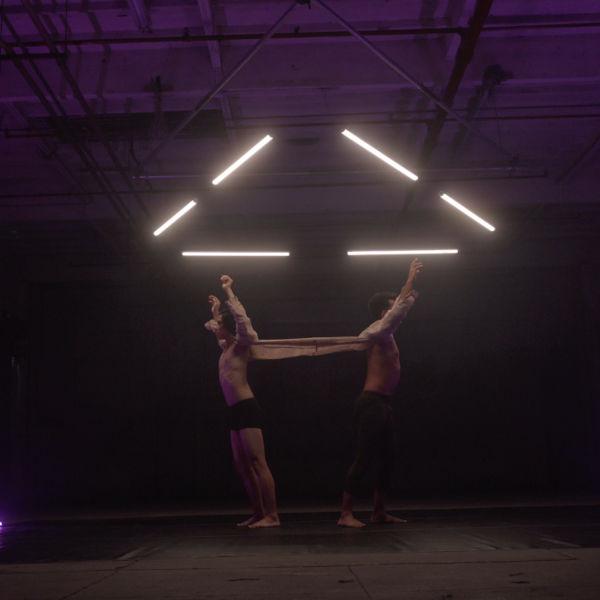
Lee’s installation ingeniously intertwines micro and macro-histories, offering a nuanced exploration of collective and individual narratives. Rather than presenting an encyclopedic narrative, Lee advocates for a pluralistic approach to history that embraces diverse perspectives and experiences. The debut presentation of Kang Seung Lee’s work at the Biennale Arte represents a significant milestone in his artistic journey, offering viewers a captivating glimpse into his multifaceted exploration of queer culture and history.
Salman Toor
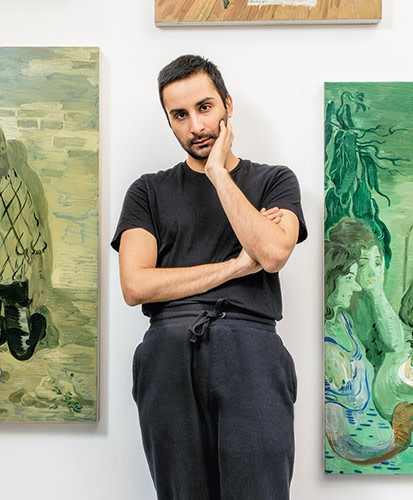
Salman Toor, a contemporary painter originally from Pakistan and now based in New York, merges academic techniques, art historical allusions, and elements from American and South Asian pop culture in his work. He crafts emotionally charged narratives rooted in personal experiences through a loose, sketch-like figurative style.
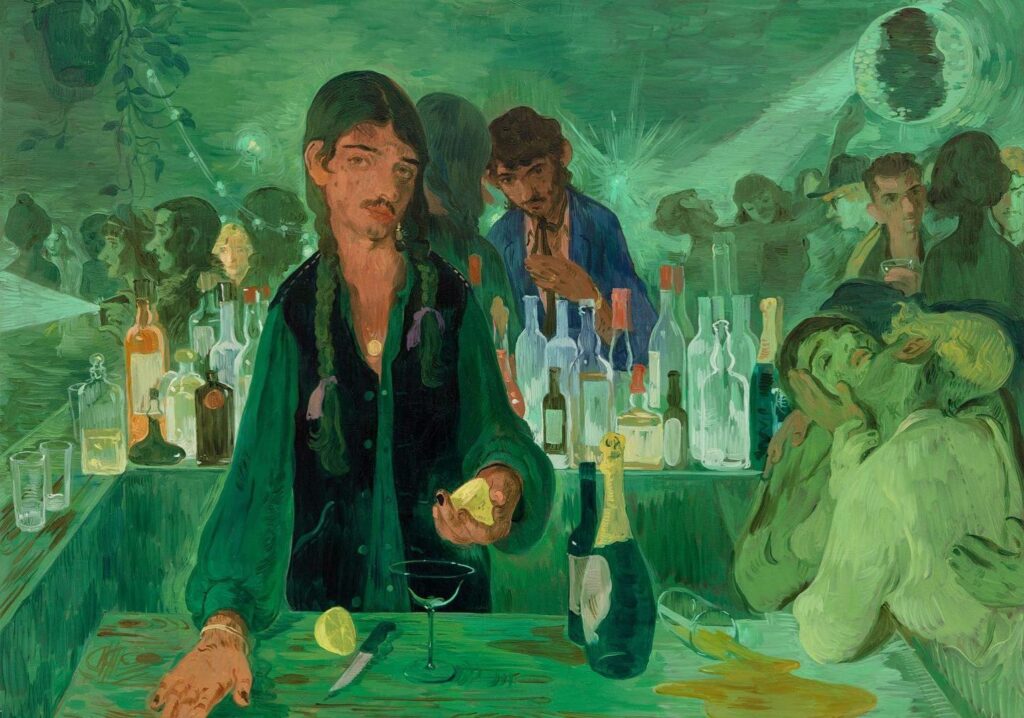
Toor’s paintings, intimate in scale, initially convey a sense of tranquillity but, upon closer inspection, reveal a raw reality within their intricacies. Delving into the complexities of the queer experience within a minority context, his artworks portray familiar settings teeming with allegorical self-portraits, unveiling desires, beliefs, and fears amidst urban indulgences. Despite moments of intimacy, his characters grapple with the looming spectres of repression, exclusion, and racial bias.
Simultaneously haunting and personal, Toor’s oeuvre incessantly challenges viewers to confront the duality inherent within the depicted scenes.
Venice Biennale 24: ‘Foreigners Everywhere’, Engraved by U.S. Artists of the 20th Century
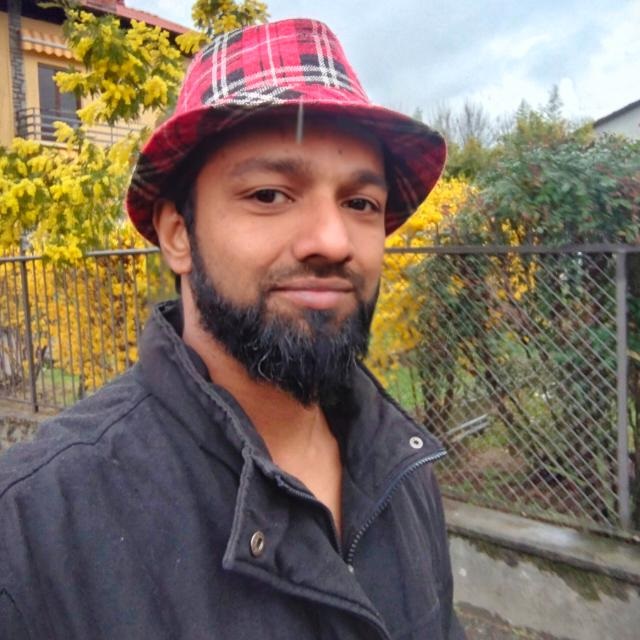
Jain Syriac Babu is a Kerala-born, Italy-based theatre artist and art enthusiast.


